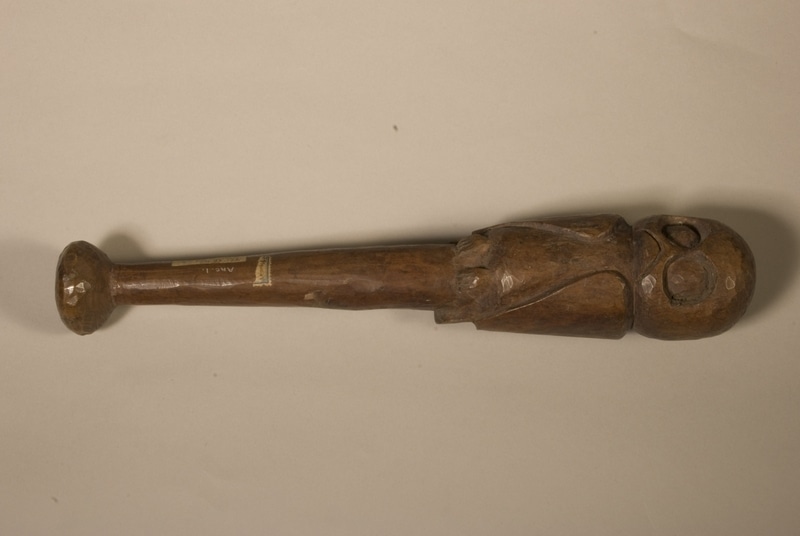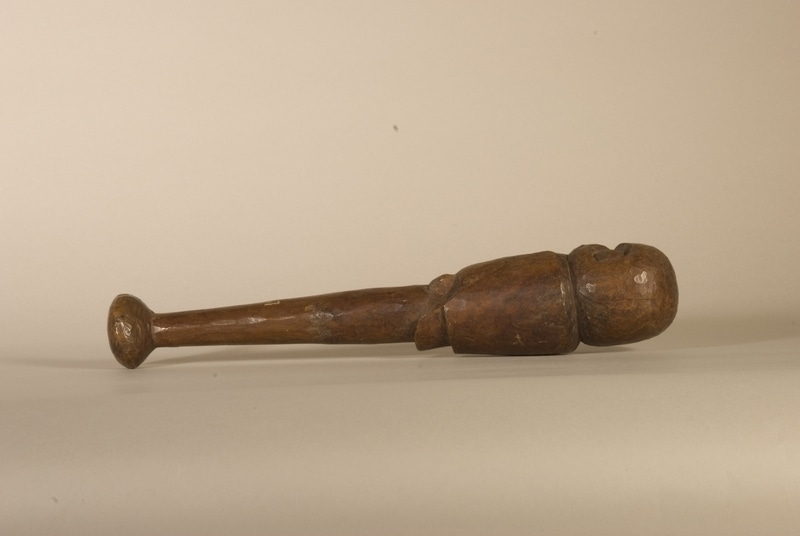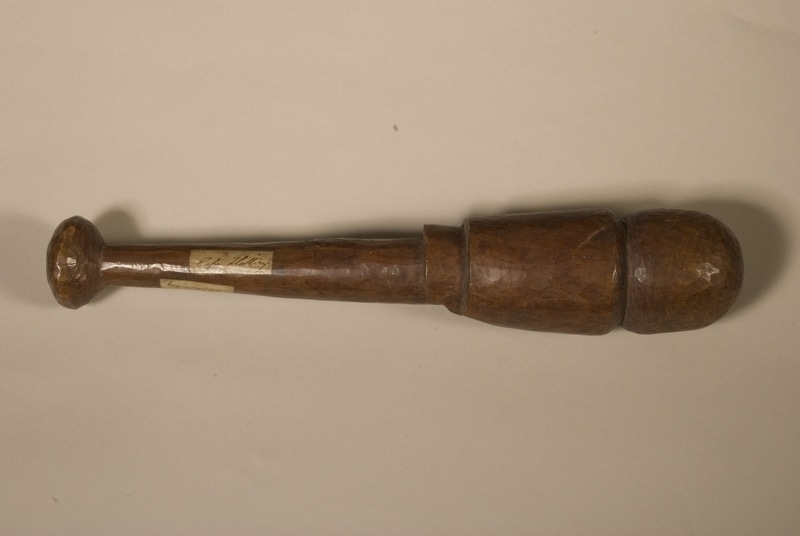Club Item Number: 1885.66.4 from the MAA: University of Cambridge



Description
Short carved club made from fine-grained heavy wood. The club is surmounted by a bird, possibly an owl which has large round eyes and a down-turned mouth. The bird' s feet rest on the top of a tapering shaft which ends in a rounded pommel.; Good
Context
The provenance of the club is given as Cape Flattery, on the northwestern tip of the Olympic Peninsula, making the club Makah in origin. It is very similar in style to E 1905.217, in turn both are very similar to two Nootka clubs in the British Museum, illustrated in J.C.H.King' s Artificial Curiosities 1981, colour plate 5, and monochrome plate 45. The Makah language is the southernmost extent of the Wakashan language, its closest branch being Nootkan, especially Nitinaht. The Makah shared subsistence patterns, social organisation and ceremonialism with their Nootkan neighbours, making the similarity of artefact style understandable. The original European tribal names and, where possible, current tribal names have both been given in separate GLT fields.; Clubs of this shape are often noted to be fish killing clubs , and they may also have been used as dancing batons, as were Kwakiutl examples (G.Crowther).; Collected by: Hepburn.J.E
Item History
- Made in British Columbia, Canada
- Received from J.E. Hepburn during 1885
Who
- Culture
- Makah
- Received from
- J.E. Hepburn
Where
- Holding Institution
- MAA: University of Cambridge
- Made in
- British Columbia, Canada
When
- Acquisition Date
- during 1885
Other
- Keyword
- Weapons; Tools; Fishing